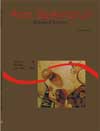Clinical, laboratory and epidemiological data of chronic chagasic patients residing in the northwestern region of the State of Paraná, Brazil
Abstract
Clinical, laboratory and epidemiological data of 48 chagasic patients living in the northwestern region of the State of Paraná were analyzed. The clinical study revealed abnormalities in 59.5% of electrocardiograms and 27% of chest x-rays. Prior to etiologic treatment, all patients had positive IIF and ELISA, except for one case with a IIF titer of 20. Hemoculture, CoML and PCR were positive in 41.7%, 89.6% and 83.3% of subjects respectively. The subjects included women (52.1%) and men (47.9%) with average age of 46.9 ± 10.1 years mainly from the States of Minas Gerais and São Paulo (70.9%) and Paraná (18.8%). The majority acquired the infection through vector contact (95.8%) and 79.2% discovered the disease because they felt ill and looked for medical care, while 8.3% discovered their illness through blood donation. Understanding the clinical, laboratory and epidemiological data of chagasic patients is of considerable importance in order to formulate etiologic treatment proposals for these patients. The majority of the subjects in this study are in the productive phase of their lives and do not present clinical abnormalities, thus raising questions related to treatment which will be evaluated in future studies.Downloads
Download data is not yet available.
Published
2008-05-09
How to Cite
Gomes, M. L., Cassarotti, D. J., Ramos, M., Zanzarini, P. D., Galvão, L. M. C., Chiari, E., & Marques-Araújo, S. (2008). Clinical, laboratory and epidemiological data of chronic chagasic patients residing in the northwestern region of the State of Paraná, Brazil. Acta Scientiarum. Biological Sciences, 22, 587-592. https://doi.org/10.4025/actascibiolsci.v22i0.2967
Issue
Section
Biology Sciences
DECLARATION OF ORIGINALITY AND COPYRIGHTS
I Declare that current article is original and has not been submitted for publication, in part or in whole, to any other national or international journal.
The copyrights belong exclusively to the authors. Published content is licensed under Creative Commons Attribution 4.0 (CC BY 4.0) guidelines, which allows sharing (copy and distribution of the material in any medium or format) and adaptation (remix, transform, and build upon the material) for any purpose, even commercially, under the terms of attribution.
Read this link for further information on how to use CC BY 4.0 properly.
0.6
2019CiteScore
31st percentile
Powered by 

0.6
2019CiteScore
31st percentile
Powered by 











1.png)




3.png)













